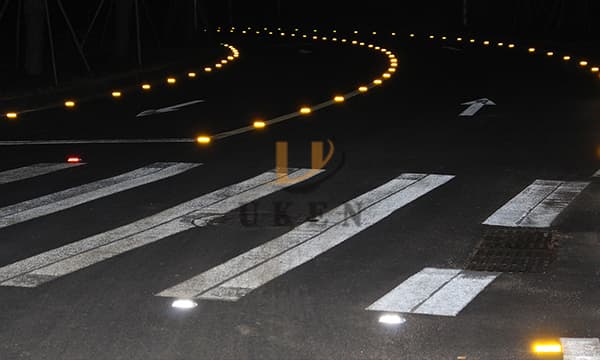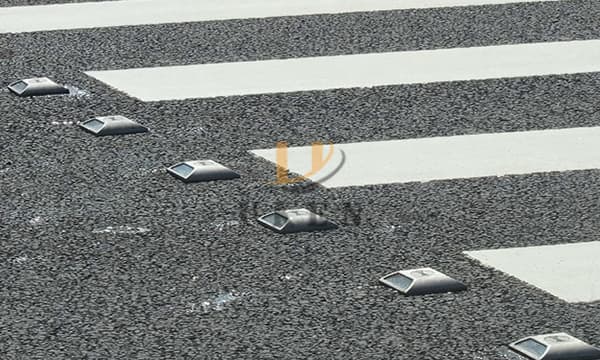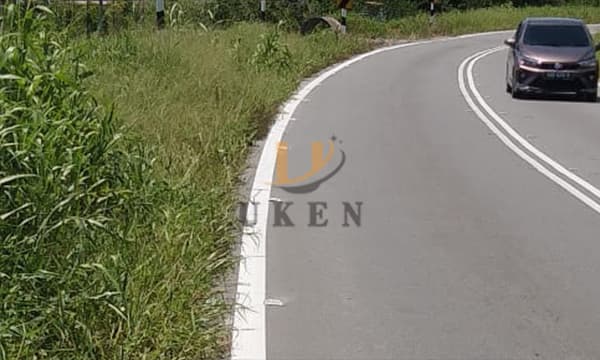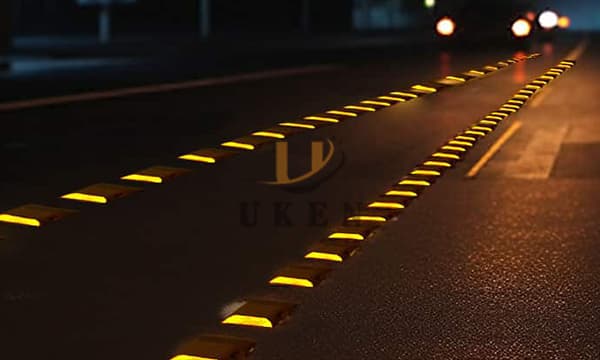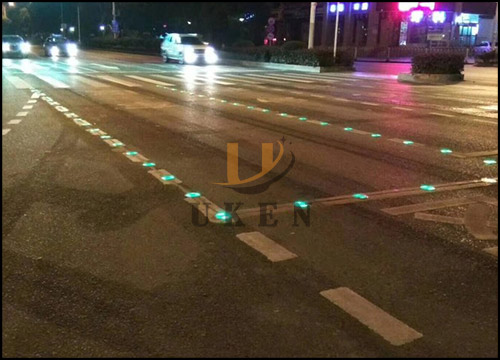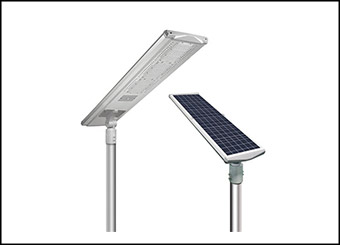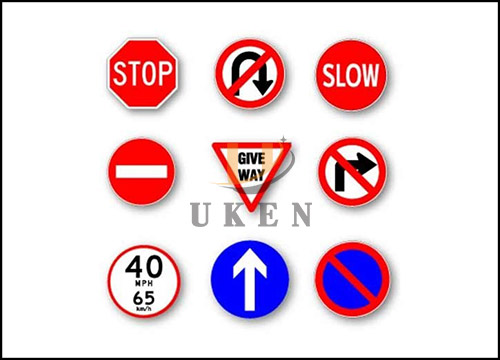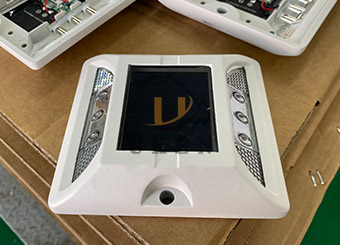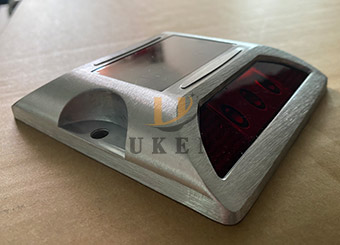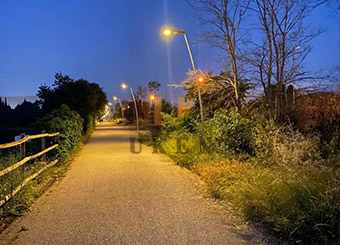When you are driving on a dark road, the road ahead illuminated by the headlights will suddenly reflect bright light and illuminate the road. This is the role of reflective road studs. After receiving the light projected by the vehicle headlights, the reflective surface on the road stud reflectors will reflect the light to the driver’s visual range, greatly improving the visibility of the road. The density of reflective pavement studs is different on different roads. When installing reflective road studs, the installation distance is generally determined. Do you know how to determine the installation distance? Will the installation distance of reflective road studs affect their use effect? Regarding the installation distance of reflective road studs, this article will give you a detailed introduction!
Is the installation distance of reflective road studs important?
1. Improve visibility and guidance effect
Reasonable installation distance can ensure that reflective road studs form a continuous light band at night or in dimly lit environments, thereby guiding drivers to drive in the correct lane. If the installation distance of reflective pavement studs is too large, the driver will not be able to see the position of the next road stud in time, resulting in a discontinuous guidance effect, which may deviate from the lane, increase driving risks, and affect driving safety.
2. Ensure the driver’s reaction time
On fast-moving roads such as highways, too-dense reflective road studs will interfere with driving because drivers need enough time to observe the road conditions and make correct reactions. Therefore, on such high-speed roads, reflective road studs need to be placed at a certain distance to leave drivers with sufficient reaction time.
3. Safety guarantee for special sections
On special sections such as bends, ramps, intersections, roundabouts, tunnels, etc., due to the relatively heavy road conditions, a shorter installation distance is required. Dense
reflective pavement studs can enhance the marking effect of the road edge, help drivers correctly judge the direction, and ensure driving safety.
What factors determine the installation distance of reflective road studs?
1. Road type
Different road types have different requirements for the installation distance of reflective road studs. On fast-moving roads such as highways, a longer observation and reaction distance is required, so the installation spacing of reflective road studs is generally larger; on urban roads or rural roads, the speed of cars is relatively slow, and the installation spacing of reflective road studs can be appropriately reduced.
2. Characteristics of special sections
In special sections such as sharp turns, continuous bends, or tunnels, due to limited vision and relatively heavy road conditions, reflective road markers are needed to provide more dense guidance signs to ensure clear road guidance and driving safety.
3. Visibility conditions
If the section of your road has long-term rain, snow, or foggy weather every year, you can consider increasing the density of reflective road studs because, in poor visibility conditions, reflective road studs are needed to provide clear light bands to provide correct guidance for passing drivers.
4. Reflective intensity of reflective road studs
The reflective intensity of
reflective road markers will also affect the installation distance of reflective road studs. If it is a high-intensity reflective road stud, the installation distance can be appropriately increased. If the brightness is low, the reflective road studs need to be installed more densely to ensure that the road can be seen clearly at night and under low visibility conditions.
Installation distance of reflective road studs
1. Expressway:
The installation distance is generally larger and can be set to 10-15 meters, which can provide longer visual guidance for passing vehicles.
2. Ordinary roads:
On urban roads or rural roads, because there are many vehicles, the speed of vehicles is generally not too fast, and the installation distance can be set to 5-10 meters.
3. Special sections such as sharp turns:
In sharp turns, ramps, and other sections where the line of sight is easily limited and guidance needs to be strengthened, the installation distance is generally shorter and can be set to 2–5 meters.
4. Dangerous sections with heavy traffic:
At intersections or other dangerous sections with very heavy traffic, the installation distance of dense
road stud reflectors can generally be set to 1-2 meters to enhance the warning and guidance effect and avoid traffic accidents.
5. Tunnels or bridges:
These road environments often have limited vision and complex road conditions. Therefore, the distance for installing reflective road markers should not be too large and can be set to 3-5 meters to ensure better guidance effect.
Conclusion
The installation distance of reflective
road studs has a direct impact on their use effect. The appropriate installation distance can not only ensure the visibility of the road and provide a comfortable driving environment for drivers, but also avoid waste. Too dense road stud reflectors will bring some safety hazards. When determining the installation distance, you can consider the overall conditions of the road section where you want to install the reflective studs and the reflective intensity of the reflective studs to avoid unnecessary waste.
